What A Healthy CHR Looked Like In 2021
By Sean Ross
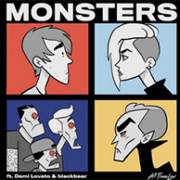 In Some Markets, 2021 Was Way Less Sad For CHR
In Some Markets, 2021 Was Way Less Sad For CHR
They were the CHR markets where All Time Low’s “Monsters,” AJR’s “Bang,” and Machine Gun Kelly’s “My Ex’s Best Friend” were even bigger hits, even sooner. They were faster on Country or Country-adjacent hits–stations where Walker Hayes’ “Fancy Like” made it into power, sometimes for more than a month, but also where collaborations like Elle King/Miranda Lambert and Nelly/Florida Georgia Line were bigger hits.
WIXX Green Bay, Wis., and WKRZ Wilkes-Barre, Pa., had one of their biggest records of the year with Why Don’t We’s “Fallin’ (Adrenaline).” On WIXX, it was literally the biggest record of the year, according to BDSradio. Throughout the year, WDW returned to power rotation on WIXX every few weeks the same way that the Kid Laroi’s “Without You” did at major-market CHR.
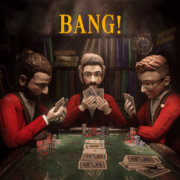 AJR’s “Bang” was in the bigger, faster, and “bigger faster” category at the handful of pop-leaning outliers. But so was “Way Less Sad,” which made it into power for a lot of these stations, as well as the year-end top 20. “Way Less Sad” was No. 12 for the year for SiriusXM Hits 1 which has always had its own watermark singles. This year, Hits 1’s No. 3 most-played song was Machine Gun Kelly & Halsey’s “Forget Me Too,” not a song worked to CHR elsewhere.
AJR’s “Bang” was in the bigger, faster, and “bigger faster” category at the handful of pop-leaning outliers. But so was “Way Less Sad,” which made it into power for a lot of these stations, as well as the year-end top 20. “Way Less Sad” was No. 12 for the year for SiriusXM Hits 1 which has always had its own watermark singles. This year, Hits 1’s No. 3 most-played song was Machine Gun Kelly & Halsey’s “Forget Me Too,” not a song worked to CHR elsewhere.
Other stations that have more of a pop/rock lean than the national norm include WDJQ (Q92) Canton, Ohio, the Bristol Broadcasting CHRs (WVSR Charleston, W. Va., WDDJ Paducah, Ky., and WAEZ Johnson City, Tenn.), and WVAQ Morgantown, W. Va. WNCI Columbus, Ohio tends to split the difference between its large market iHeart CHR sister stations and the smaller market outlets.
While some radio listening began to ease back toward its pre-COVID patterns this winter and spring, there was little evidence of it at large-market CHR. At year’s end, there is a feeling that pop music is better, but definitely not in the MTV/Michael Jackson-in-1993 or teen-pop-in-1997 way that could yet drive a format resurgence—especially with the impact of streaming on younger listeners.
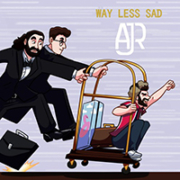 In the medium- and smaller-markets, things were, well, “Way Less Sad” for CHR as evidenced by the spring ‘21 Nielsens. I’ve written at length about WIXX and WKRZ as stations that somehow chose not to participate in the format downturn. Bristol’s CHRs don’t buy Nielsen. Townsquare’s WKFR Kalamazoo, Mich., and WZOK Rockford, Ill., do buy ratings, and deserve a mention as well.
In the medium- and smaller-markets, things were, well, “Way Less Sad” for CHR as evidenced by the spring ‘21 Nielsens. I’ve written at length about WIXX and WKRZ as stations that somehow chose not to participate in the format downturn. Bristol’s CHRs don’t buy Nielsen. Townsquare’s WKFR Kalamazoo, Mich., and WZOK Rockford, Ill., do buy ratings, and deserve a mention as well.
We don’t have ratings for SXM Hits 1, but as with the satellite service in general, it cast a more unavoidable footprint in the format this year. A decade ago, broadcast Top 40 provided itself on not playing, say, JTX’s “Love in America” no matter how big it was on Hits 1. This year, label reps say those stories are less likely to be dismissed.
Here’s SiriusXM Hits 1’s Top 15 of 2021. Airplay is measured from Jan. 1 through Dec. 2, reflecting the chart year used for the BDSradio/Billboard national charts.
1 – Billie Eilish, “Therefore I Am”
2 – Glass Animals, “Heat Waves”
3 – Machine Gun Kelly & Halsey, “Forget Me Too”
4 – Olivia Rodrigo, “Good 4 U”
5 – Doja Cat, “Kiss Me More”
6 – Marshmello x Jonas Brothers, “Leave Before You Love Me”
7 – Tate McRae, “You Broke Me First”
8 – Lil Nas X, “Montero (Call Me By Your Name)”
9 – All Time Low f/Blackbear, “Monsters”
10 – Taylor Swift, “Willow”
11 – The Kid Laroi & Justin Bieber, “Stay”
12 – AJR, “Way Less Sad”
13 – The Weeknd, “Save Your Tears”
14 – Olivia Rodrigo, “Déjà vu”
15 – Machine Gun Kelly x blackbear, “My Ex’s Best Friend”
Here’s WIXX’s Top 15 of 2021:
1 – Why Don’t We, “Fallin’ (Adrenaline)”
2 – Elle King & Miranda Lambert, “Drunk (And I Don’t Wanna Go Home)”
3 – Justin Bieber, “Anyone”
4 – Nelly & Florida Georgia Line, “Lil Bit”
5 – Dua Lipa, “Levitating”
6 – 24kGoldn f/Ian Dior, “Mood”
7 – Machine Gun Kelly x Blackbear, “My Ex’s Best Friend”
8 – All Time Low f/Blackbear, “Monsters”
9 – Dua Lipa, “We’re Good”
10 – Pink, “All I Know So Far”
11 – AJR, “Way Less Sad”
12 – Lukas Graham, “Share That Love”
13 – AJR, “Bang!”
14 – The Kid LAROI, “Without You” (never switched to the Miley mix because the original was working)
15 – Maroon 5 f/Megan Thee Stallion, “Beautiful Mistakes”
Some other unusual titles among WIXX’s most-played:
- Keith Urban f/Pink, “One Too Many” (17)
- Dirty Heads f/Train, “Vacation” (23)
- Kane Brown f/Blackbear, “Memory” (27)
- Banners, “Someone to You” (32)
- Tom Grennan, “Little Bit of Love” (34)
- Clinton Kane, “Chicken Tendies” (38)
- Astronomers, “Overthinking” (55) – local pop/punk hit
Here’s WKRZ, which is a little more of a hybrid between the large- and small-market versions.
1 – The Kid LAROI f/Miley Cyrus, “Without You”
2 – Machine Gun Kelly x Blackbear, “My Ex’s Best Friend”
3 – AJR, “Way Less Sad”
4 – All Time Low f/Blackbear, “Monsters”
5 – 24kGoldn f/Ian Dior, “Mood”
6 – The Weeknd, “Save Your Tears”
7 – Ed Sheeran, “Bad Habits”
8 – Chris Brown & Young Thug, “Go Crazy”
9 – Dua Lipa, “Levitating”
10 – Olivia Rodrigo, “Good 4 U”
11 – Glass Animals, “Heat Waves”
12 – Justin Bieber, “Anyone”
13 – Doja Cat f/SZA, “Kiss Me More”
14 – Why Don’t We, “Fallin’ (Adrenaline)”
15 – Regard x Troye Sivan x Tate McRae, “You”
Also of note:
- Nelly & Florida Georgia Line, “Lil Bit” (20)
- Harry Styles, “Golden” (28)—also #74 on WIXX
- Shawn Mendes, “Wonder” (31)
- Zoe Wees, “Control” (37)
- Pink, “All I Know So Far” (42)
- Jessia, “I’m Not Pretty” (45)
WNCI is further still toward the large-market model, but still has some outliers of its own. Tate McRae’s “You Broke Me First” was No. 7 in Columbus vs. No. 19 nationally. Duncan Laurence’s “Arcade” was No. 15 vs. No. 39 national. We also saw:
- Kane Brown x Blackbear, “Memory” (18)”
- AJR, “Bang” (20)—WNCI is also leading on “The Good Part” as a streaming-driven bringback
- Harry Styles, “Golden” (26)
- AJR, “Way Less Sad” (32)
- Twenty One Pilots, “Shy Away” (41, as you’d expect from the local heroes)
Here are some highlights from WAEZ (Electric 94.9) Johnson City, Tenn., which also tends to take from both lists. A lot of its hits tend to be reflected at its Bristol Broadcasting sisters, WVSR (Electric 102.7) Charleston, W. Va., and WDDJ (Electric 96.9) Paducah, Ky.
- Machine Gun Kelly x Blackbear, “My Ex’s Best Friend” (1)
- Tate McRae, “You Broke Me First” (3)
- Chris Brown f/Young Thug, “Go Crazy” (4)
- Maroon 5 f/Megan Thee Stallion, “Beautiful Mistake” (8)
- Harry Styles, “Golden” (10)
- AJR, “Bang” (14)
- Justin Bieber, “Anyone” (21)
It’s a different sort of alternate universe CHR, but it’s fun to look at the top 15 Canadian CHR hits, as measured by BDSradio.
1 – Dua Lipa, “Levitating”
2 – The Weeknd, “Save Your Tears” (Cancon)
3 – Maroon 5 f/Megan Thee Stallion, “Beautiful Mistakes”
4 – Lil Nas X, “Montero (Call Me By Your Name)”
5 – Doja Cat f/SZA, “Kiss Me More”
6 – Ed Sheeran, “Bad Habits”
7 – Justin Bieber f/Daniel Caesar & Giveon, “Peaches”
8 – Shawn Mendes & Justin Bieber, “Monster” (Cancon, although most Mendes and Bieber songs, including “Peaches” are not)
9 – The Kid Laroi & Justin Bieber, “Stay”
10 – 24KGoldn f/Iann Dior, “Mood”
11 – Tate McRae, “You Broke Me First” (Cancon)
12 – Olivia Rodrigo, “Good 4 u”
13 – DVBBS f/Quinn XCII, “West Coast” (Cancon)
14 – Elijah Woods, “Lights” (Cancon)
15 – The Kid Laroi f/Miley Cyrus, “Without You”
Finally, here are the biggest songs of the year on the handful of English-language Mexican stations measured by BDSRadio. Top 40 in Mexico (and Puerto Rico) has often had more of a European flavor with more dance and more danceable modern rock represented.
1 – The Weeknd, “Save Your Tears”
2 – Doja Cat f/SZA, “Kiss Me More”
3 – Silk Sonic, “Leave the Door Open”
4 – Olivia Rodrigo, “Driver’s License”
5 – Tiesto, “The Business”
6 – Masked Wolf, “Astronaut in the Ocean”
7 – Marshmello x Jonas Brothers, “Leave Before You Love Me”
8 – Justin Bieber f/Daniel Caesar & Giveon, “Peaches”
9 – Ed Sheeran, “Bad Habits”
10 – Majestic x Boney M, “Rasputin”
11 – The Kid Laroi f/Justin Bieber, “Stay”
12 – Harry Styles, “Golden”
13 – Lil Nas X, “Montero (Call Me By Your Name)”
14 – Maneskin, “Beggin’”
15 – The Weeknd, “Blinding Lights”
Sean Ross is a veteran programmer, researcher, and the author of the Ross On Radio newsletter. Find him or subscribe free @RossOnRadio on Twitter. Contact him at rossonradio@comcast.net
Those Who Try Powergold Get It
Powergold users across the world rate us #1 in the industry for our ease of use, control of music flow, radio experience, and support and training. It’s time to discover Powergold and all the great things you’ve been missing.
Please fill out this form and we’ll reach out right away to schedule your demo.

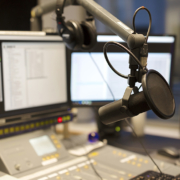
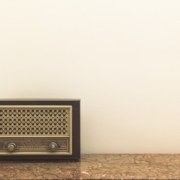
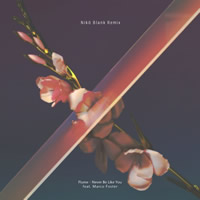 Claustrophobia presents itself in too many similarly-produced hit songs, and not a variety of musical styles. For much of the late 2010s, that dominant style was mid-to-down tempo, repetitious, unhappy. Top 40 flourished when the two-of-the-same segue was “Dynamite” into “Party Rock Anthem.” It was different when the similar sounding hits were Chainsmokers, “Don’t Let Me Down” and Flume, “Never Be Like You.” I do feel that the contemporary music is better now, although there’s still not enough depth and variety to power a CHR comeback.
Claustrophobia presents itself in too many similarly-produced hit songs, and not a variety of musical styles. For much of the late 2010s, that dominant style was mid-to-down tempo, repetitious, unhappy. Top 40 flourished when the two-of-the-same segue was “Dynamite” into “Party Rock Anthem.” It was different when the similar sounding hits were Chainsmokers, “Don’t Let Me Down” and Flume, “Never Be Like You.” I do feel that the contemporary music is better now, although there’s still not enough depth and variety to power a CHR comeback.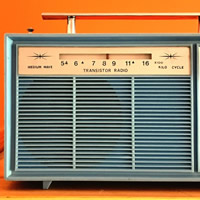
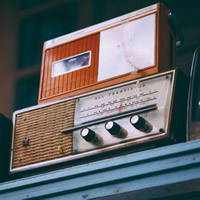
 I’m not the first person to make
I’m not the first person to make 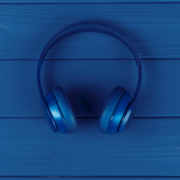
 In late July, I heard WHTZ (Z100) New York play “Good 4 U” by Olivia Rodrigo, followed by “Love Again” by Dua Lipa. “Good 4 U” was, at that point, an eight-week-old record, but one of the few that had gone to power rotation almost instantly. “Love Again” ultimately did not go to power for most stations but at that moment, it was a new, uptempo single from a core artist.
In late July, I heard WHTZ (Z100) New York play “Good 4 U” by Olivia Rodrigo, followed by “Love Again” by Dua Lipa. “Good 4 U” was, at that point, an eight-week-old record, but one of the few that had gone to power rotation almost instantly. “Love Again” ultimately did not go to power for most stations but at that moment, it was a new, uptempo single from a core artist.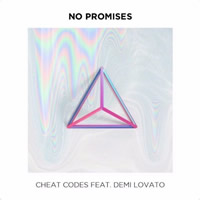
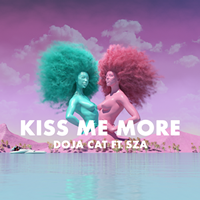 Freshness and excitement are hard things to quantify. Radio programmers and researchers know how to ask if listeners are burnt on a song, and we accept that there are some songs that listeners might both love and be tired of. Until they specifically articulate that, however, we assume they are as enthusiastic about the fifth play and the five-hundredth. Isn’t hearing a favorite song inherently exciting? If “Kiss Me More” or “Good 4 U” are still testing power, is it just arbitrary to decide that we need some new ones?
Freshness and excitement are hard things to quantify. Radio programmers and researchers know how to ask if listeners are burnt on a song, and we accept that there are some songs that listeners might both love and be tired of. Until they specifically articulate that, however, we assume they are as enthusiastic about the fifth play and the five-hundredth. Isn’t hearing a favorite song inherently exciting? If “Kiss Me More” or “Good 4 U” are still testing power, is it just arbitrary to decide that we need some new ones?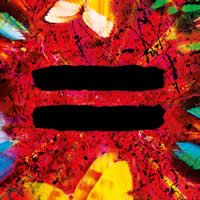 In recent weeks, Z100 has blurred the difference between “power” and “power new.” Through late August, monitors showed it playing five powers, topping out around 117-122x a week. This week, its eight most-played songs are getting between 82x and 72x spins per week. Those most-played songs go as far back as “Déjà vu” and as recent as “Shivers” (meaning that both Sheeran hits are included). Z100 has recently introduced a personality afternoon show, which would naturally affect available spins, but it didn’t rework its rotations immediately.
In recent weeks, Z100 has blurred the difference between “power” and “power new.” Through late August, monitors showed it playing five powers, topping out around 117-122x a week. This week, its eight most-played songs are getting between 82x and 72x spins per week. Those most-played songs go as far back as “Déjà vu” and as recent as “Shivers” (meaning that both Sheeran hits are included). Z100 has recently introduced a personality afternoon show, which would naturally affect available spins, but it didn’t rework its rotations immediately.


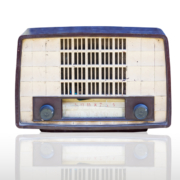
 From the moment that AC
From the moment that AC  Of the Soft ACs launched or relaunched in recent years, some have found success being tightly defined, such as KISQ and sister WLIT (Lite-FM) Chicago. But another iHeart station, WISX (The Breeze) Philadelphia has moved closer to mainstream AC recently. WLTW (Lite-FM) New York has found success in recent years re-adding Air Supply and Peabo Bryson titles to pre-empt a Soft AC attack, but it also plays Chris Brown’s “Go Crazy” and Doja Cat’s “Say So” at the contemporary end.
Of the Soft ACs launched or relaunched in recent years, some have found success being tightly defined, such as KISQ and sister WLIT (Lite-FM) Chicago. But another iHeart station, WISX (The Breeze) Philadelphia has moved closer to mainstream AC recently. WLTW (Lite-FM) New York has found success in recent years re-adding Air Supply and Peabo Bryson titles to pre-empt a Soft AC attack, but it also plays Chris Brown’s “Go Crazy” and Doja Cat’s “Say So” at the contemporary end. It’s interesting to consider whether the demand for Soft AC is for a consistently soft station or just for AC to bring back some of the big songs it dropped during the rush to contemporize. Then you wonder how narrow stations should be in the playlist age. Even on satellite radio, channels are tightly defined. Sirius XM’s rapidly proliferating online-only channels are subsets of those music formats. Do broadcasters still need to narrowcast?
It’s interesting to consider whether the demand for Soft AC is for a consistently soft station or just for AC to bring back some of the big songs it dropped during the rush to contemporize. Then you wonder how narrow stations should be in the playlist age. Even on satellite radio, channels are tightly defined. Sirius XM’s rapidly proliferating online-only channels are subsets of those music formats. Do broadcasters still need to narrowcast? In recent years, many formats have addressed that narrowness. R&B/Hip-Hop has more of the former from H.E.R., Jazmine Sullivan, and Silk Sonic, although there’s more balladry and still little center-lane, midtempo product. Active Rock’s resurgence last year coincided with a wider variety of available music. Country made a concerted effort to play more female acts. Top 40 is playing a
In recent years, many formats have addressed that narrowness. R&B/Hip-Hop has more of the former from H.E.R., Jazmine Sullivan, and Silk Sonic, although there’s more balladry and still little center-lane, midtempo product. Active Rock’s resurgence last year coincided with a wider variety of available music. Country made a concerted effort to play more female acts. Top 40 is playing a 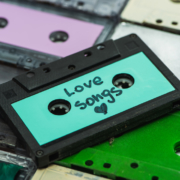
 But when I wrote that, I wasn’t complaining about ballads. I was thinking more of the moment that EDM became slow and sludgy, reaching the point in 2016 where CHR radio became Chainsmokers’ “Don’t Let Me Down” followed by Flume’s “Never Be Like You,” and remained in a similar place until relatively recently. Individually, many of those songs were real hits. Collectively, they made pop music both more passive and more aggressive. If CHR had flourished, I would have just assumed that I had become too old to follow a younger audience to the next phase. But CHR didn’t flourish.
But when I wrote that, I wasn’t complaining about ballads. I was thinking more of the moment that EDM became slow and sludgy, reaching the point in 2016 where CHR radio became Chainsmokers’ “Don’t Let Me Down” followed by Flume’s “Never Be Like You,” and remained in a similar place until relatively recently. Individually, many of those songs were real hits. Collectively, they made pop music both more passive and more aggressive. If CHR had flourished, I would have just assumed that I had become too old to follow a younger audience to the next phase. But CHR didn’t flourish.  In early 2011, Adele’s “Rolling in the Deep” exploded, followed by “Someone Like You,” the undeniable song that punctured the ballad blockade. By 2013, we saw three piano ballads — Bruno Mars’ “When I Was Your Man,” Pink’s “Just Give Me a Reason,” and Rihanna’s “Stay” — become hits simultaneously. It was now clear that “Someone Like You” had redefined the hit ballad, making it starker, less produced. As a radio formula, big Diane Warren/David Foster-style ballads had been in decline for a decade or so. Now it was official. I only wish that “Rolling in the Deep” had been just as influential.
In early 2011, Adele’s “Rolling in the Deep” exploded, followed by “Someone Like You,” the undeniable song that punctured the ballad blockade. By 2013, we saw three piano ballads — Bruno Mars’ “When I Was Your Man,” Pink’s “Just Give Me a Reason,” and Rihanna’s “Stay” — become hits simultaneously. It was now clear that “Someone Like You” had redefined the hit ballad, making it starker, less produced. As a radio formula, big Diane Warren/David Foster-style ballads had been in decline for a decade or so. Now it was official. I only wish that “Rolling in the Deep” had been just as influential.  Over that last five years, there have been surprisingly few true ballad hits. That becomes apparent when looking at a soft AC like KISQ (the Breeze) San Francisco, which plays only five ballads from the last three years. The most recent of those are Maroon 5’s “Memories” and Lewis Capaldi’s “Someone You Loved.” The ballads that do become CHR hits are descended from “Someone Like You.” They are often solemn (Justin Bieber’s “Lonely,” Duncan Laurence’s “Arcade”) or, in the case of “Memories,” literally elegiac. We have breakup songs and personal laments. They’re hits, but we have no traditional love ballads.
Over that last five years, there have been surprisingly few true ballad hits. That becomes apparent when looking at a soft AC like KISQ (the Breeze) San Francisco, which plays only five ballads from the last three years. The most recent of those are Maroon 5’s “Memories” and Lewis Capaldi’s “Someone You Loved.” The ballads that do become CHR hits are descended from “Someone Like You.” They are often solemn (Justin Bieber’s “Lonely,” Duncan Laurence’s “Arcade”) or, in the case of “Memories,” literally elegiac. We have breakup songs and personal laments. They’re hits, but we have no traditional love ballads. TikTok- and streaming-friendly, our current midtempo hits are often the ones most easily identified by our large-market CHRs. They work better for me now because there is more tempo. I really enjoy Doja Cat’s “You Right,” and I like it particularly as a change-up from “Kiss Me More.” This is not the summer of “Thriller,” but it still works out nicely that “You Right” dropped on the same morning as Ed Sheeran’s “Bad Habits.” Then, uptempo Camila Cabello and the Weeknd singles followed at regular intervals.
TikTok- and streaming-friendly, our current midtempo hits are often the ones most easily identified by our large-market CHRs. They work better for me now because there is more tempo. I really enjoy Doja Cat’s “You Right,” and I like it particularly as a change-up from “Kiss Me More.” This is not the summer of “Thriller,” but it still works out nicely that “You Right” dropped on the same morning as Ed Sheeran’s “Bad Habits.” Then, uptempo Camila Cabello and the Weeknd singles followed at regular intervals. So what should pop music should be at this moment, following an actual worldwide trauma that we did not manage to avoid? “Blinding Lights” found a balance of driving and melancholy, then hung in for a year because few other songs did. But listeners have also rewarded Dua Lipa four times for her fun, uptempo, and just-edgy-enough diversions. We need songs now for both our anxiety and our aspirations. (As it happens, Foster is working American Authors, “Nice and Easy” at Hot AC, while RCA has Walk the Moon’s “Can You Handle My Love,” landing at Alternative now — two positive songs by acts who provided buoyant moments even as hit music changed in the mid-‘10s.)
So what should pop music should be at this moment, following an actual worldwide trauma that we did not manage to avoid? “Blinding Lights” found a balance of driving and melancholy, then hung in for a year because few other songs did. But listeners have also rewarded Dua Lipa four times for her fun, uptempo, and just-edgy-enough diversions. We need songs now for both our anxiety and our aspirations. (As it happens, Foster is working American Authors, “Nice and Easy” at Hot AC, while RCA has Walk the Moon’s “Can You Handle My Love,” landing at Alternative now — two positive songs by acts who provided buoyant moments even as hit music changed in the mid-‘10s.)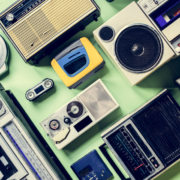
 Over the course of the next 18 hours, I heard
Over the course of the next 18 hours, I heard  You’ll hear plenty of songs on O-N like the Supremes’ “Love Child” or Paul Simon’s “Mother and Child Reunion,” big hits that were readily available on the radio for years, but are less so now that the ‘60s and early ‘70s are less available on broadcast radio. But the song that just followed Simon was “I Just Want to Dance With You” by George Strait. And on the first day of my O-N listening, I heard it play Simon’s “Run That Body Down” from the same album. Now it’s playing “All the Way to Reno” by R.E.M.
You’ll hear plenty of songs on O-N like the Supremes’ “Love Child” or Paul Simon’s “Mother and Child Reunion,” big hits that were readily available on the radio for years, but are less so now that the ‘60s and early ‘70s are less available on broadcast radio. But the song that just followed Simon was “I Just Want to Dance With You” by George Strait. And on the first day of my O-N listening, I heard it play Simon’s “Run That Body Down” from the same album. Now it’s playing “All the Way to Reno” by R.E.M. In my role as a researcher and consultant to radio stations, I respect and am happy to facilitate those stations that want to play 220 immaculately testing Classic Hits titles. I’m even happier when a PD wants to color that in a little. I have reached the point where I don’t need to hear “Livin’ on a Prayer,” but I want to help you hear it, and make sure you get it from broadcast radio, not somewhere else. And I’m very happy to report that I’m starting to hear “Bad Medicine” by Bon Jovi on well-executed, well-researched radio stations a little more often.
In my role as a researcher and consultant to radio stations, I respect and am happy to facilitate those stations that want to play 220 immaculately testing Classic Hits titles. I’m even happier when a PD wants to color that in a little. I have reached the point where I don’t need to hear “Livin’ on a Prayer,” but I want to help you hear it, and make sure you get it from broadcast radio, not somewhere else. And I’m very happy to report that I’m starting to hear “Bad Medicine” by Bon Jovi on well-executed, well-researched radio stations a little more often. WOON got me thinking about what to call this genre of oldies station. There are degrees by which stations diverge from the safelist. Many, such as KAZG Phoenix or the True Oldies Channel, specialize in the big ‘60s or ‘70s songs that were part of the format’s safelist of 15-20 years ago, before the ‘80s became the center of the format. WMTR Morristown, N.J., bills itself as “Classic Oldies,” and I think that’s a pretty good name for that flank of the format, differentiating those stations from “Classic Hits.”
WOON got me thinking about what to call this genre of oldies station. There are degrees by which stations diverge from the safelist. Many, such as KAZG Phoenix or the True Oldies Channel, specialize in the big ‘60s or ‘70s songs that were part of the format’s safelist of 15-20 years ago, before the ‘80s became the center of the format. WMTR Morristown, N.J., bills itself as “Classic Oldies,” and I think that’s a pretty good name for that flank of the format, differentiating those stations from “Classic Hits.” Oldies XL stations usually have a mission that doesn’t depend on winning in rated markets. WOON is a full-service community radio station. That it plays “Money, Money, Money” by Abba is a bonus. But “ratings winner” has been coming in a lot of different shapes and sizes lately, as evidenced by WAKY Louisville, Ky. (which is at least in the “Classic Oldies” camp), leading the market with a 6.8 share 12-plus.
Oldies XL stations usually have a mission that doesn’t depend on winning in rated markets. WOON is a full-service community radio station. That it plays “Money, Money, Money” by Abba is a bonus. But “ratings winner” has been coming in a lot of different shapes and sizes lately, as evidenced by WAKY Louisville, Ky. (which is at least in the “Classic Oldies” camp), leading the market with a 6.8 share 12-plus.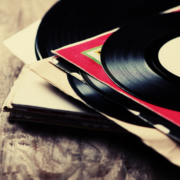


 There are two possible solutions.
There are two possible solutions.  We don’t trust radio’s ability to create its own stories. The PDs who lobbied to bring back songs or hold on to them longer in the ‘90s—the practice that still influences today’s charts—were the same PDs who went through every cut on the Janet Jackson album to find “Escapade” before it was a single. I keep writing about “Lil Bit” by Nelly & Florida Georgia Line. That song is +169 spins today. It was losing spins earlier this week. But “Lil Bit” keeps returning to power at WIXX and WKSZ Green Bay, Wis., two stations that rarely agree about songs. With so much external stimuli, I find it particularly meaningful now when a song can become a hit in one market, or when the competition is forced to acknowledge it.
We don’t trust radio’s ability to create its own stories. The PDs who lobbied to bring back songs or hold on to them longer in the ‘90s—the practice that still influences today’s charts—were the same PDs who went through every cut on the Janet Jackson album to find “Escapade” before it was a single. I keep writing about “Lil Bit” by Nelly & Florida Georgia Line. That song is +169 spins today. It was losing spins earlier this week. But “Lil Bit” keeps returning to power at WIXX and WKSZ Green Bay, Wis., two stations that rarely agree about songs. With so much external stimuli, I find it particularly meaningful now when a song can become a hit in one market, or when the competition is forced to acknowledge it.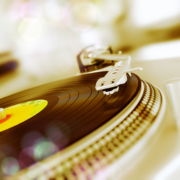
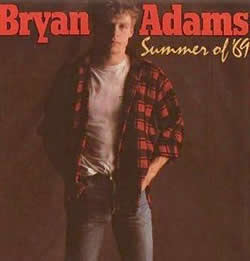 The “no wow” oldie is easier to pin down. A “no wow” song is the enduring hit still heard on multiple formats and stations within a market—most obviously those songs at the “Don’t Stop Believin’”/”Summer of ‘69” level. They are clearly still well-loved records, but even the listeners still delighted by those songs are not surprised by them.
The “no wow” oldie is easier to pin down. A “no wow” song is the enduring hit still heard on multiple formats and stations within a market—most obviously those songs at the “Don’t Stop Believin’”/”Summer of ‘69” level. They are clearly still well-loved records, but even the listeners still delighted by those songs are not surprised by them.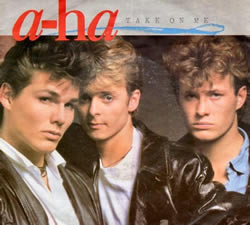 by non-superstar artists who became unhip quickly after their hit streak ended. It’s easy to remember when “Eye of the Tiger” by Survivor, “(I Just) Died in Your Arms” by Cutting Crew, “Your Love” by the Outfield, and even “Take On Me” by a-Ha were once scarce on the radio. In the mid-‘00s, those songs became the secret weapons of the Adult Hits format in the mid-‘00s. Now, they’re Classic Hits and AC warhorses.
by non-superstar artists who became unhip quickly after their hit streak ended. It’s easy to remember when “Eye of the Tiger” by Survivor, “(I Just) Died in Your Arms” by Cutting Crew, “Your Love” by the Outfield, and even “Take On Me” by a-Ha were once scarce on the radio. In the mid-‘00s, those songs became the secret weapons of the Adult Hits format in the mid-‘00s. Now, they’re Classic Hits and AC warhorses. Five years ago, I asked readers to tell me “Songs You’re Sick and/or Tired Of.” I recognized that “Jack and Diane” and “Sweet Home Alabama” were still hits. I had just reached the point where I could not sit through them, even while monitoring a client station. For readers, songs like “Jessie’s Girl” and “Livin’ on a Prayer” were already on the list. Interestingly, so were certain hits that hadn’t been on radio for years—“You Light Up My Life,” “Seasons in the Sun,” “Achy Breaky Heart”—but hadn’t lost their power to traumatize.
Five years ago, I asked readers to tell me “Songs You’re Sick and/or Tired Of.” I recognized that “Jack and Diane” and “Sweet Home Alabama” were still hits. I had just reached the point where I could not sit through them, even while monitoring a client station. For readers, songs like “Jessie’s Girl” and “Livin’ on a Prayer” were already on the list. Interestingly, so were certain hits that hadn’t been on radio for years—“You Light Up My Life,” “Seasons in the Sun,” “Achy Breaky Heart”—but hadn’t lost their power to traumatize.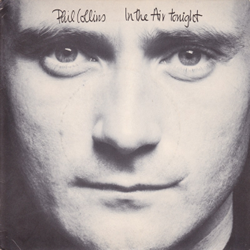 West. WUBE (B105) Cincinnati PD Grover Collins cited the Outfield song. “’In The Air Tonight’ by Phil Collins is single-handedly killing FM,” said recent Ross On Radio contributor Jason Kidd.
West. WUBE (B105) Cincinnati PD Grover Collins cited the Outfield song. “’In The Air Tonight’ by Phil Collins is single-handedly killing FM,” said recent Ross On Radio contributor Jason Kidd. CIND (Indie 88) Toronto PD Ian March listed “Girls Just Wanna Have Fun,” “Someone Like You,” “When I Come Around,” and “Summer of ‘69” as “’no wows’ that I still enjoy.” That “Summer of ‘69” is still on the list is a particular accomplishment given the relationship between Canadian PDs and the “Cancon” titles that still comprise 35-40% of their music by regulatory fiat.
CIND (Indie 88) Toronto PD Ian March listed “Girls Just Wanna Have Fun,” “Someone Like You,” “When I Come Around,” and “Summer of ‘69” as “’no wows’ that I still enjoy.” That “Summer of ‘69” is still on the list is a particular accomplishment given the relationship between Canadian PDs and the “Cancon” titles that still comprise 35-40% of their music by regulatory fiat.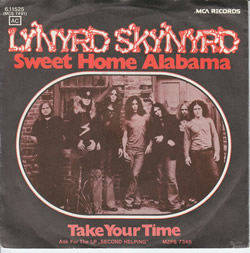 ‘70s songs than five years ago, although KNCI Sacramento morning man Tom Mailey still cites “The Joker.” But fewer songs are at that level now. Five years ago, “Carry on Wayward Son” was hard to sit through; that song has hardly become “lost,” but I might not punch it out now. I don’t think “Sweet Home Alabama” has reached that point yet, however.
‘70s songs than five years ago, although KNCI Sacramento morning man Tom Mailey still cites “The Joker.” But fewer songs are at that level now. Five years ago, “Carry on Wayward Son” was hard to sit through; that song has hardly become “lost,” but I might not punch it out now. I don’t think “Sweet Home Alabama” has reached that point yet, however.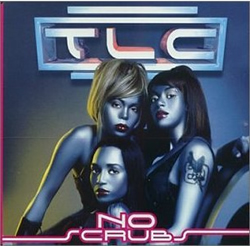 There are always songs beginning their Outfield-like arc at radio. “Wannabe” has gone from risible to reliable over five years’ time. I am not surprised by encountering it on the radio, but nor am I anywhere near tired of it yet. Same goes for “Everybody (Backstreet’s Back)” by the Backstreet Boys. If I lived in South Florida, which has several stations pounding ‘90s titles at the moment, I might feel differently. But “No Scrubs” by TLC still sounds great after 6-7 years on the radio.
There are always songs beginning their Outfield-like arc at radio. “Wannabe” has gone from risible to reliable over five years’ time. I am not surprised by encountering it on the radio, but nor am I anywhere near tired of it yet. Same goes for “Everybody (Backstreet’s Back)” by the Backstreet Boys. If I lived in South Florida, which has several stations pounding ‘90s titles at the moment, I might feel differently. But “No Scrubs” by TLC still sounds great after 6-7 years on the radio.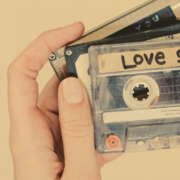
 But more ‘90s are making their way onto the radio in general, as kids of that era move into the AC and Classic Hits demo. Those songs are coming from various places. Only a few markets have a station like Miami’s WMIA (Totally 93.9). But the resurgent Soft AC format has cheerfully played Celine, Savage Garden, and Mariah. Even Classic Hits stations are pushing forward, often differently from station to station.
But more ‘90s are making their way onto the radio in general, as kids of that era move into the AC and Classic Hits demo. Those songs are coming from various places. Only a few markets have a station like Miami’s WMIA (Totally 93.9). But the resurgent Soft AC format has cheerfully played Celine, Savage Garden, and Mariah. Even Classic Hits stations are pushing forward, often differently from station to station. Miami: Entercom’s WLYF (Lite 101.5) still plays one ‘90s per hour, but Cox’s WFEZ (Easy 93.1) has tried to blunt the impact of WMIA, thus far successfully, by upping the ‘90s content and positioning around it. WFEZ played 3-4 ‘90s in the hours we heard (average 3.75). At WFEZ, a ‘90s title could end a sweep (“Sometimes Love Just Ain’t Enough”) and begin the next one (“Save the Best for Last”).
Miami: Entercom’s WLYF (Lite 101.5) still plays one ‘90s per hour, but Cox’s WFEZ (Easy 93.1) has tried to blunt the impact of WMIA, thus far successfully, by upping the ‘90s content and positioning around it. WFEZ played 3-4 ‘90s in the hours we heard (average 3.75). At WFEZ, a ‘90s title could end a sweep (“Sometimes Love Just Ain’t Enough”) and begin the next one (“Save the Best for Last”). Atlanta: WSB-FM (B98.5) Atlanta has long been one of the hottest/newest Mainstream ACs. It played two ‘90s an hour through the afternoon we looked at. WSTR (Star 94) is a recently relaunched Rhythmic AC, which played anywhere from two to four titles in the hours we looked at, for an average of 3.25. Again, Star’s ‘90s could be a typical AC song like “Waterfalls,” but it could also be “Rhythm is a Dancer.”
Atlanta: WSB-FM (B98.5) Atlanta has long been one of the hottest/newest Mainstream ACs. It played two ‘90s an hour through the afternoon we looked at. WSTR (Star 94) is a recently relaunched Rhythmic AC, which played anywhere from two to four titles in the hours we looked at, for an average of 3.25. Again, Star’s ‘90s could be a typical AC song like “Waterfalls,” but it could also be “Rhythm is a Dancer.”